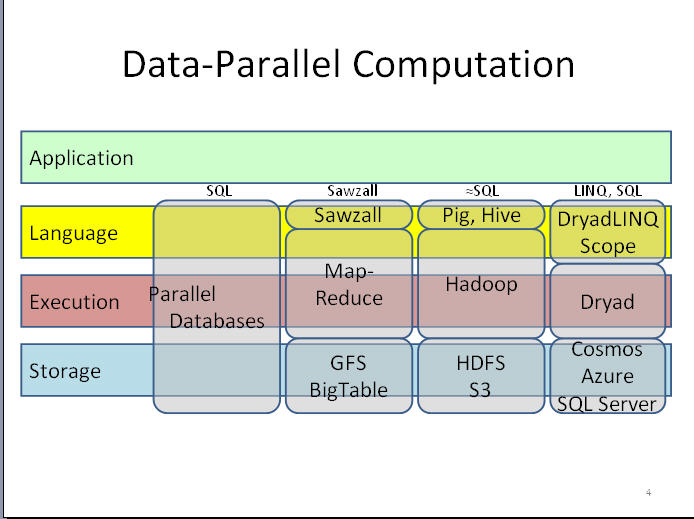Microsoft releases Dryad concurrent-programming code to academics

It's been two years since Microsoft Chairman Bill Gates talked up Dryad, Microsoft's concurrent-programming competitor to Google's MapReduce and Apache Hadoop. But this week, Dryad was back on the radar screen, with Microsoft's release of the Dryad code to academics and researchers.
The goal of Dryad is to enable programmers to develop and run applications on Windows computer clusters. The Dryad software is designed to allow systems to automatically parallelize at a low level complex applications across multiple machines. Unlike existing high-performance computing and grid platforms, which are more focused on compute-intensive workloads, Dryad is more geared toward data-intensive computing scenarios where scale and fault-tolerance are of the essence.
Microsoft and a very few select partners have been using the Dryad code to develop a variety of sample and real-world apps -- everything from bio-informatics to astronomy-focused programs.
At Microsoft's Faculty Summit 2009 conference this week, company officials announced the availability of Dryad and the DryadLINQ programming tools. (The Dryad code is in binary form and DryadLINQ in source form). DryadLinq makes the Language-Integrated Query (LINQ) extensions to the C# programming language available to .Net developers writing Dryad apps. Researchers and academics can download both Dryad and DryadLINQ after signing Microsoft's MS-Research licensing agreement.
At the conference, Microsoft execs also acknowleged that Dryad is not available on top of Azure, Microsoft's cloud-computing platform, but that the plan is to make it available there. Officials didn't offer Factulty Summit attendees a timetable for the Azure move, however.
(Check out the slide below from a March 2009 Dryad presentation by Microsoft Researcher Mihai Budiu. The Azure pieces are grayed out, but it's possible to see how Microsoft envisions Dryad working with Azure.)
For now, Dryad is more research project than anything else. Like all Microsoft Research projects, there's no guarantee if and when it will be commercialized.
But in 2008, Michael Isard, a Senior Researcher for Microsoft Research Silicon Valley, said Dryad "was built partly to help product groups with the short-term need they had to analyze data and partly in the hopes of being an enabling platform that would allow us to do research into other aspects of distributed computing."
Microsoft has lots of different concurrent and distributed-computing projects at various stages of readiness. Midori, its next-generation operating system currently in incubation at the company, is just one of these.
